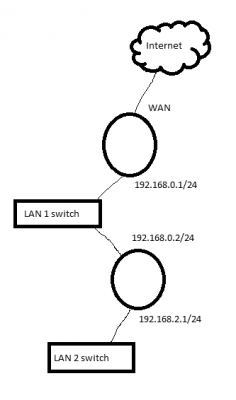Layzie Bone
Solid State Member
- Messages
- 20
- Location
- Hayesville, NC
The main problem I have is that the DHCP server is running out of addresses.
Our network is 192.168.0.0/24 and at the moment uses a DHCP range of 192.168.0.20-189
Not sure why the partial range and yes increasing the scope to include addresses through 254 would give me more addresses but that still may not be enough under certain conditions.
Normally I would have just changed the subnet to 255.255.254.0 which would have given me the block of 192.168.0.1-192.168.1.254 but we have a VPN through our firewall from another network that uses (you guessed it) 192.168.1.0/24
So changing the subnet is out of the question. Changing the IP addresses of all the devices to work around the issue would be impractical.
My thinking would be to create an additional scope 192.168.2.0/24 to serve guests and use DHCP reservations for our in-house devices on the 192.168.0.0/24 scope.
My question is would this work in practice? Any thoughts and advice would be appreciated.
Our network is 192.168.0.0/24 and at the moment uses a DHCP range of 192.168.0.20-189
Not sure why the partial range and yes increasing the scope to include addresses through 254 would give me more addresses but that still may not be enough under certain conditions.
Normally I would have just changed the subnet to 255.255.254.0 which would have given me the block of 192.168.0.1-192.168.1.254 but we have a VPN through our firewall from another network that uses (you guessed it) 192.168.1.0/24
So changing the subnet is out of the question. Changing the IP addresses of all the devices to work around the issue would be impractical.
My thinking would be to create an additional scope 192.168.2.0/24 to serve guests and use DHCP reservations for our in-house devices on the 192.168.0.0/24 scope.
My question is would this work in practice? Any thoughts and advice would be appreciated.
